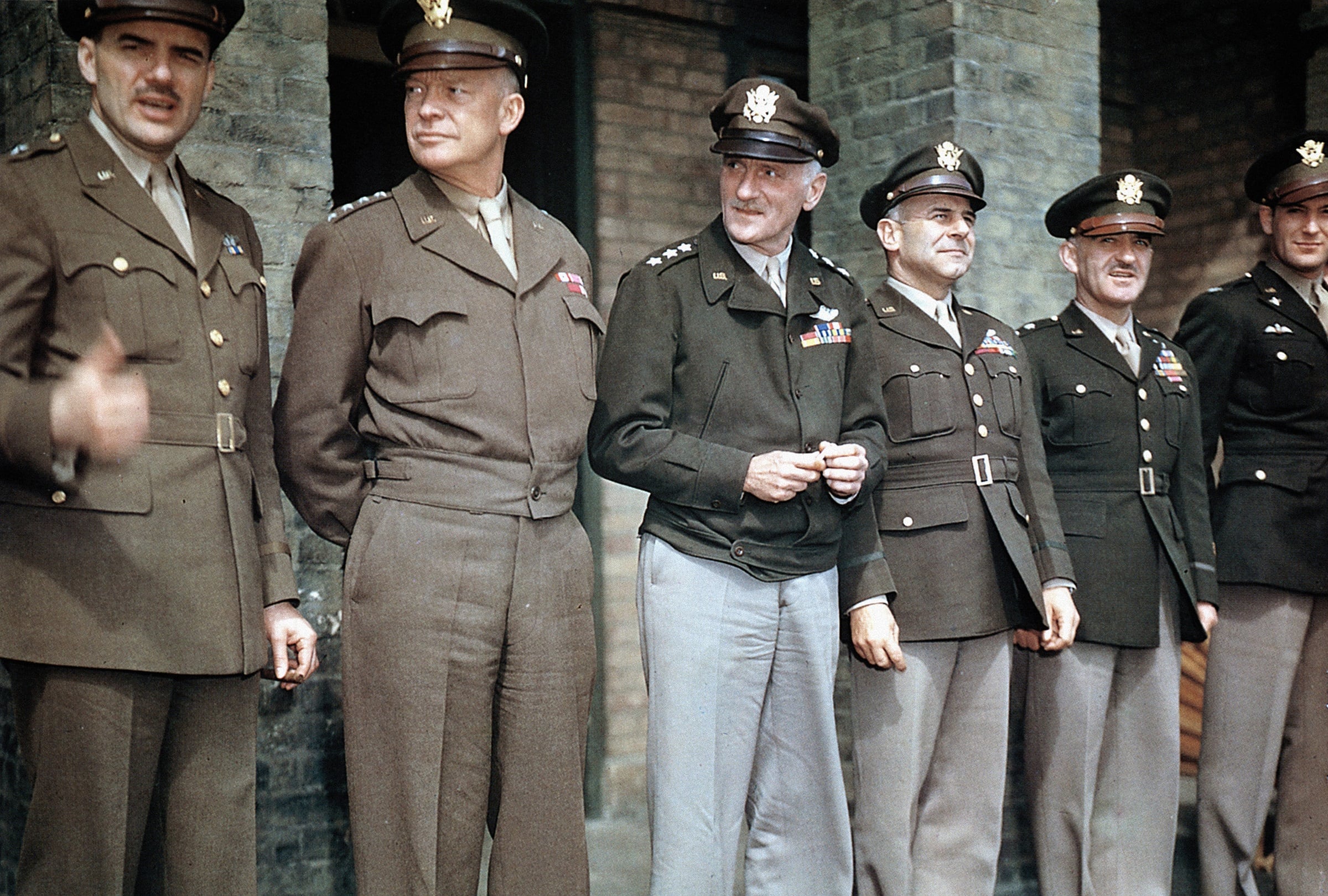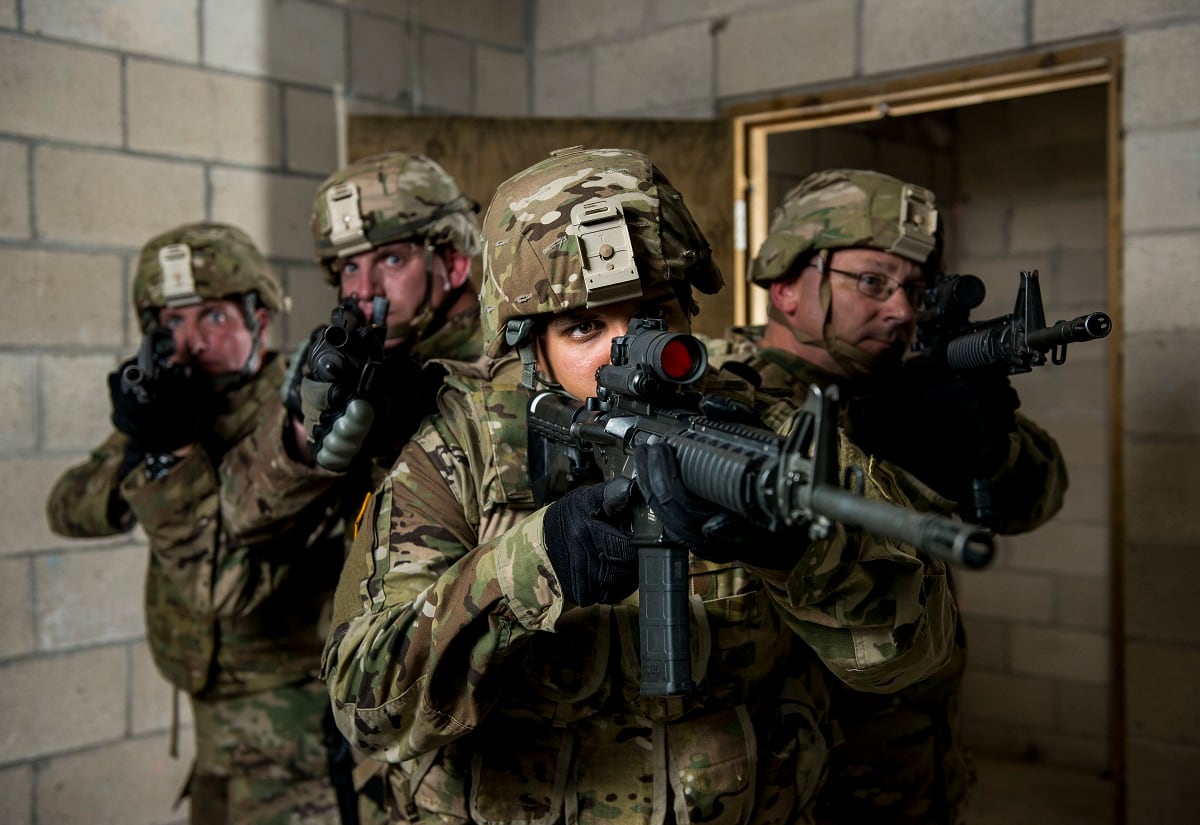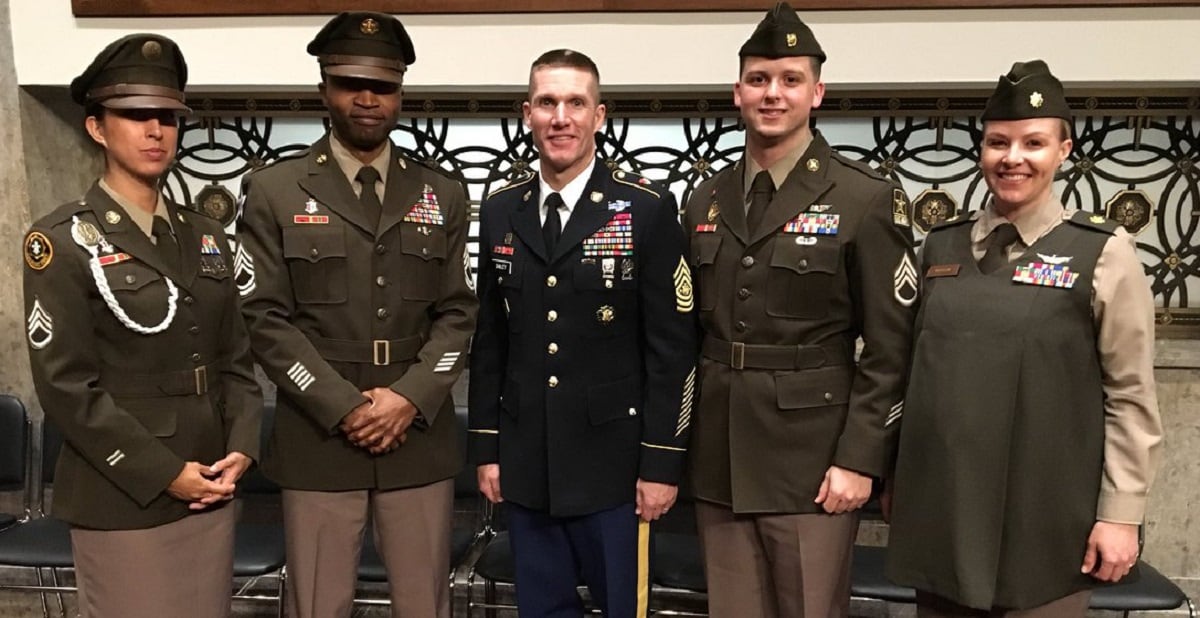Editor’s note: An earlier version of this article had a headline that mistakenly implied Army Chief of Staff Gen. Mark Milley had given final approval to bring back the pinks and greens uniform. A final decision has not been made.
Spring is here, and the Army is inching closer to making a final decision on bringing back the World War II-era pinks and greens service uniform.
Army Chief of Staff Gen. Mark Milley likes the designs so far, according to Sergeant Major of the Army Dan Dailey, so the next step is to put together a plan to produce and issue the business-appropriate attire.
“I have to give the secretary and the chief options,” Dailey told Army Times on Tuesday.
The base prototypes for the uniforms are largely decided, he said. From the first prototypes unveiled last fall, the time at PEO Soldier have added a belt — to more closely resemble the version of the uniform worn by Gen. Douglas MacArthur — as well as creating an almost identical male and female version, complete with long tie.

The sticking point for women has been whether to add chest pockets to the jacket.
Some women find the pockets unflattering, Dailey said, while others don’t mind them, so the design team has gone back and forth.
“The team actually came up with the idea of, why don’t we give you the pockets that come with the uniform and you have them sewn on?” he said.
That way, women could have them positioned where they’re most flattering, or not use them at all.
“A pocket on these types of uniforms aren’t functional pockets anyway,” he added.
For now, Dailey and the team are working on a plan to get the cost of the uniform itself to a reasonable level, while trying to save money on manufacturing and distribution.
“The boss has given me some guidance on cost, and very clear guidance, without reducing quality,” he said, though he would not share that price ceiling.
PEO Soldier is considering issuing the uniform to soldiers, rather than putting the cost in the enlisted clothing allowance and requiring soldiers to go out and buy it themselves.
”So if we issue it instead of giving money to soldiers through their clothing allowance — actually, soldiers would prefer that anyway,” Dailey said. “And it could be cheaper, because I could give higher continuous production rates to manufacturers.”
RELATED

Or, they could use a clothing sales system Dailey last saw on a deployment to Iraq, where rather than the logistics system bringing replacement uniforms halfway across the world, soldiers were able to log into a website and, using a credit loaded into the system, have what they needed shipped to them.
That would similarly save the Army money in having to store new pinks and greens and feed them into post exchanges.
“The cheapest way to do logistics ... to reduce stockage — because that’s overheard, that’s warehouses, people — is to time your sales with production,” he said. “So if you can ship it straight from production to the customer, you have taken out all of the center of logistics.”
Meanwhile, the team is prototyping ideas for optional clothing adds, including two jackets: one short, green “Ike” jacket, and a brown leather option.
Despite a harsh budget environment, Dailey said he believes the return on investment of a new uniform would justify the required expense, even after searching out every cost-saving option.
“It does have value,” he said. “It’s got value in the perception of the American soldier, recruiting — I honestly believe that. But that perceived valued cannot exceed monetary value.”
Meghann Myers is the Pentagon bureau chief at Military Times. She covers operations, policy, personnel, leadership and other issues affecting service members.




